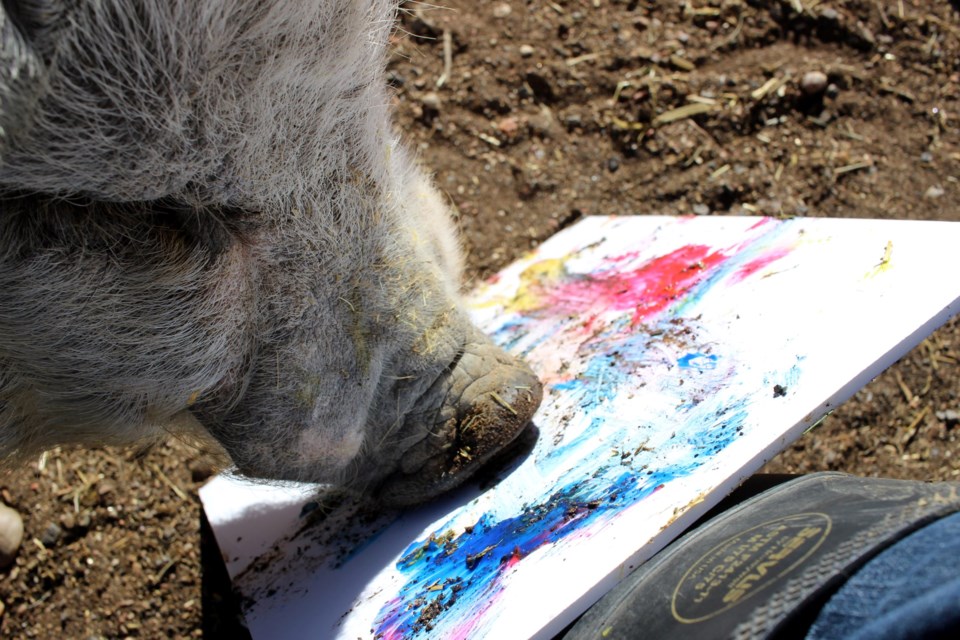The Good Life Refuge, a Longmont nonprofit farm animal sanctuary that was just starting to establish a following as the coronavirus pandemic hit, isn’t letting COVID stand in the way of it celebrating its birthday.
The sanctuary, which officially turned 2 on Sept. 5, will mark the occasion Saturday with a party complete with some artistic swine. The Good Life will celebrate with the launch of "Piggies that Paint,” a free Zoom event that will include a 30-minute sanctuary tour and 30 minutes of observing several potbellied pigs painting on canvases and creating two “pigtastic” masterpieces. To help bolster the nonprofit’s bottom line, the paintings will be raffled off to people that donate $5 or more.
The virtual event starts at 2 p.m. Register here.
The painting pigs are residents of Doolittle Farm Sanctuary, a private Boulder County farm animal sanctuary whose co-founder, Cindy Gordon, is a member of the Good Life board of directors. Gordon started the sanctuary with her husband, Keith Hughes.
Gordon said she discovered the talents of her porcine residents after reading about the intelligence of potbellied pigs, including Pigcasso, the resident of a South African animal sanctuary that garnered international fame.
“I wanted to keep their brains busy and interested,” said Gordon, who is a psychotherapist and art therapist in Longmont. “... I wanted to give them some activities to let them express themselves creatively. It’s really an enrichment activity for them, a lot of fun for me, and a bonding activity for us.”
She said she went through a number of processes to discover her four pigs’ inner artists, including pairing verbal cues with touching their noses to the canvas and rewarding them with treats. The paint is edible.
Right now she has two “master painters” — Hope and Tiptoe, who will be among the pigs featured in Saturday’s event.
The goal is to eventually bring Good Lifes’ pigs into the painting fold, too.
As those plans take shape, the work at the sanctuary carries on even as fundraising has slowed during the pandemic.
“Funding is a very crucial part of rescue work and has really been stalled for the last two months,” said Nicole Brecht, founder and president of the sanctuary.
Like numerous other nonprofits, without a certain amount of fundraising each month, the Good Life’s reserves will continue to be depleted, which means its rainy day fund won’t last until it rains.
Brecht hopes Saturday’s celebration, which also will allow attendees to virtually meet the sanctuary’s 55 animal residents, will put the Good Life back on people’s radar. The Good Life, which closed to in-person visitors in March, has again begun offering on-site tours to families and household groups of up to 10. But those tours are really for people who don’t require social distance from each other, since Brecht said she can’t ensure 6 feet of separation between people.
“Connection is the part that is missing without in-person visits. People who have connected here are still giving … but we’re really not able to grow,” she said.
Brecht said she is taking a measured approach to growth, even as requests to save more animals keep coming. Creating space for the animals is among the cost barriers to adopting new residents, with Brecht saying it costs about $500 to build a fairly decent sized enclosure. Food and medical care for the animals, many of which have special needs, also adds up.
“The dilemma we face is people think we can take in an abundance of animals, but it comes down to the availability of housing and quarantine space,” she said. “Many rescues build as they go; we’re trying to be proactive but we get asked often to take in new animals.”



